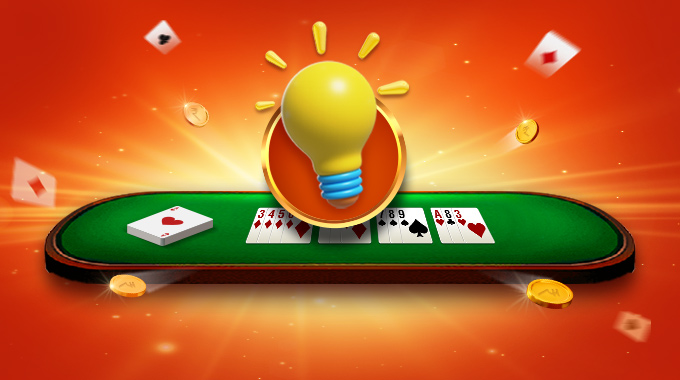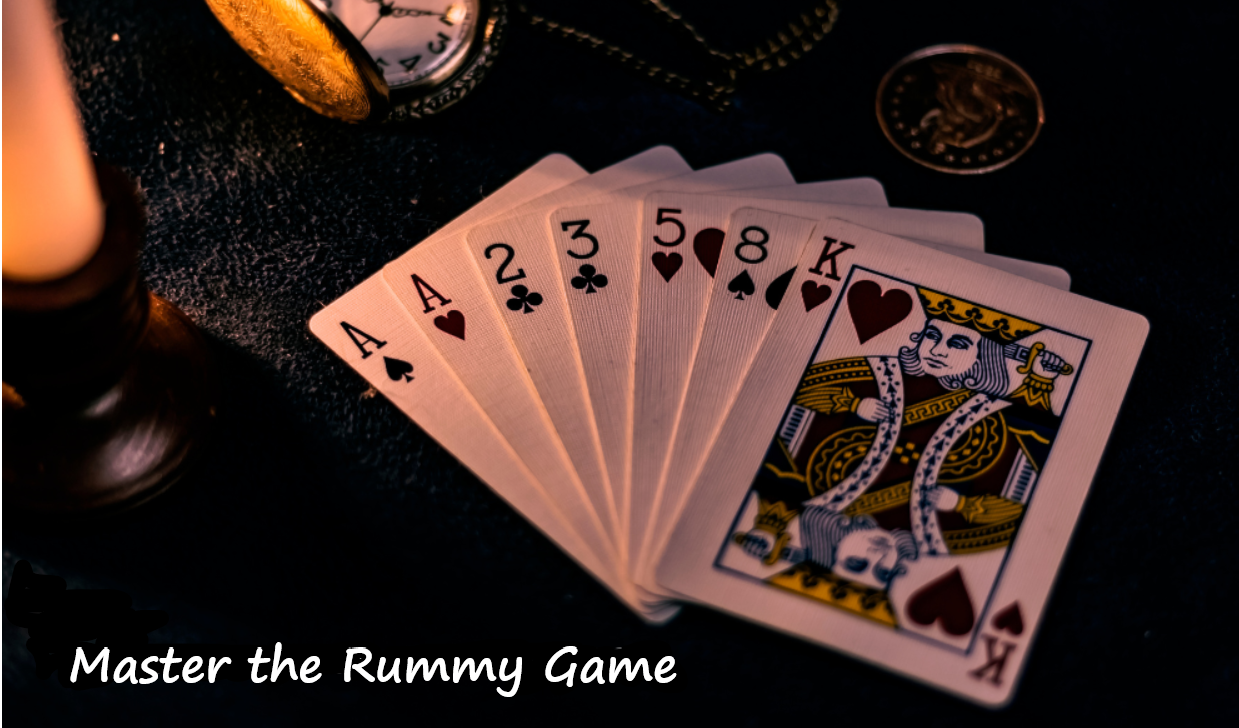
Strategies of Effective Team Play & Rummy Partnerships
Rummy is one of the most extensively played card games among millions across the globe. Among all the various formats by which the game of rummy is played, one is by team or partnership rummy. In this format, unlike solo format wherein each player plays in a one on one manner with others, there is an incorporation of partnership with teamwork in case of partnership rummy. Whether it is playing with friends or in an organized tournament, knowing and using effective strategies for team play can make all the difference between victory and defeat.
In this article, we’ll explore the key strategies for success in rummy partnerships, covering everything from communication and coordination to the psychology of teamwork and understanding your partner’s playstyle.
1. Communication: The Foundation of Effective Team Play
While rummy is basically a game of skill and strategy, communication makes for a silent yet integral constituent of the game, particularly in the game of partnerships. Communication here doesn’t imply speaking or exchanging cards; rather it’s through unspoken hints and smart plays.
- Reading Your Partner’s Moves
Winning in team play for rummy lies in understanding and reacting to the moves made by your partner. As a matter of fact, people can take heed of the card that they get rid of, taking the cards or the tempo associated with playing in this game. For example, if your fellow throws a card you think that the fellow needs, say middling-value one of a suite you have also, this will imply that he is within melding off or close to completing a sequential run. By paying attention to these signals, you can change your own game plan to either help them or not hinder their strategy.
- Coordinating Discards and Picks
Team players should pay more attention to the coordination of cards picked and discarded. Powerful strategy is preventing the partners from discarding those cards that will prove useful to the other also. If you have a sequence in your hand to make a specific sequence in that same suit, you don’t want your partner to discard a card which will complete both of your sequences. Discussion with cards picked or discarded might help avoid this.
- Avoiding Discarding Key Cards
Another efficient strategy is when partners learn what cards to keep and what cards to not drop so the other doesn’t get a chance to pick them. For instance, if your partner is working on a specific sequence, do not discard any card that could complete that sequence even though it doesn’t seem useful for your hand.
2. Learning Your Partner’s Playing Style
Every player has his own style of playing rummy. Some players are very conservative and play safe discards without taking too many risks. The other is an aggressive player who discards freely and takes a chance to make high-value sets and sequences early.
Understanding and adapting to your partner’s playstyle is key to winning. If your partner is conservative, for example, it might be a good idea to play more aggressively and create an offensive balance. Conversely, if your partner is aggressive, it might be wise for you to play a more cautious game so that you do not lose too quickly.
- Knowing When to Take Risks
In a game of team play, it’s knowing when to take and when not to. Sometimes you have to hold back on a small risk for a large benefit to your partner’s strategy. That might mean getting rid of a card that could help you but is more important for the other player. It is a mutual decision to take calculated risks, so it definitely emphasizes the effectiveness of teamwork.
3. Card Counting: Improving Team Smarts
Card counting is one of the best moves in rummy. When you play with a partner, it becomes even more critical in a partnership game as it benefits both players on the team. It allows you to know which cards are discarded, which remain in the game, and which are likely to appear next, so you can make better choices.
- Keep track of the high-value cards
Some of the high-value cards are also very important in completing important sets and sequences. In partnership rummy, a player should track the cards that opponents and partners discard. If your partner is trying to complete one sequence, following the remaining cards in that sequence can prove helpful.
For instance, if your partner requires a “10” of spades to complete a sequence, and you notice that a “10” of spades has already been discarded, then you can take action. Recording such cards will enable you to make better choices, thus lessening the opportunities for unnecessary risks and losses.
- Use Memory to Your Advantage
The role of memory in team-based rummy is significant. As the game ensues, knowing which cards have been discarded, picked up, or held can be quite rewarding. If both you and your partner can keep track of the remaining deck and the opponent’s hands, you will be better anchored toward probable combinations and plays.
4. Management of Risks and Adaptation
Adaptation is the most significant factor in team rummy games. You and your partner could start with one strategy, but as rummy game dynamics go fast, you could need to shift gears at short notice. In this case, players must be flexible enough to adjust their strategies according to changes in the game play.
- Adaptation to opponent behavior
A rummy game dynamics may shift very fast as a result of how you may view your opponents playing the game. Therefore, if your opponents start playing aggressively, then you would need to shift from conservatism to offense. On the other hand, if your opponents are cautious, then you take up a more conservative approach assuming they would hesitate to make an offensive attack.
If the partner is stuck, one must make adjustments to play for the partner, for example, by holding onto cards that can help the partner.
- Risk Management for the Team
In the case of partnership rummy, both partners are in this together. Hence, risk management becomes a very important factor. While one would hate to take an undue risk for himself, he would also not like to allow his partner to commit an error. When a partner has the tendency to play a dangerous move, then the other partner may need to intervene by lessening the danger or by compelling him to take the safer alternative.
For example, if your partner is going out too early or forms a dead hand, you can play a little more cautiously and strategically by holding on to certain cards that could help him complete a set or sequence.
5. Psychological Aspects: Reading the Opponents and Partner
This game is not just about the cards, but reading one’s opponents, understanding the basis of the psychology of humans.
In a team-based rummy, this will also include your partner’s mental state.
- Read Your Opponents’ Bluffs and Moves
Like any card game, rummy can involve bluffing. Some players may discard certain cards intentionally to mislead you about their hand, making it difficult for you to track their strategy. Understanding when an opponent is bluffing can give your team a considerable advantage, especially when working together to block their progress.
- The other tool for effective teamwork is to be able to detect hesitation or confidence in the opponent’s play. If a player hesitates when discarding, it could mean that he is holding important cards, so your team gets a chance to play against his strategy.
- Support Your Partner Emotionally
It was a very emotional game, of course, but like every other sports game; sometimes one of your partners is getting frustrated or anxious, depending on the point at which it is not getting as planned by them. Hence, it requires a team player to stay hopeful and raise your morale and the morale of the partner, giving him concentration at the time of playing. A cool, positive attitude goes a long way in building teamwork and reducing costly mistakes in stress or frustration.
6. Play patiently and correctly
While playing rummy in teams, patience is inevitable. Since such games tend to be lengthy affairs, you definitely do not wish to rush a decision. Making an accurate step can help to avoid doing unconsidered bluffs that ruin your strategy since you and your teammate are unable to think straight any longer.
- Focus on the Long-Term Goal
Therefore, the player gets diverted towards this over some short-term gain and gets confined to hitting an easy set or sequence in the given deal. Rummy is played as a game of strategy at a long term scale whereas playing aggressively sometimes can lead one to commit costly errors. Try constructing towards an ending goal so one reaches that perfectly filled hand with proper combination of viable sets and sequences.
Conclusion
Therefore, winning at partnership rummy is contingent upon efficient communication, some strategic thinking of one’s actions, and understanding how to stay adaptable to these changing circumstances; it can even be done from the perspective of studying the play-style of your counterpart, reading opponents perfectly, and running a risk plan for the overall team. It all boils down to teamwork, nonetheless. Effective teams with a tremendous grip on rummy are those which make or break a championship team.
These tactics will not only make the game better but will also strengthen the partnership to face any challenge that the game might throw your way. Happy rummy playing!

